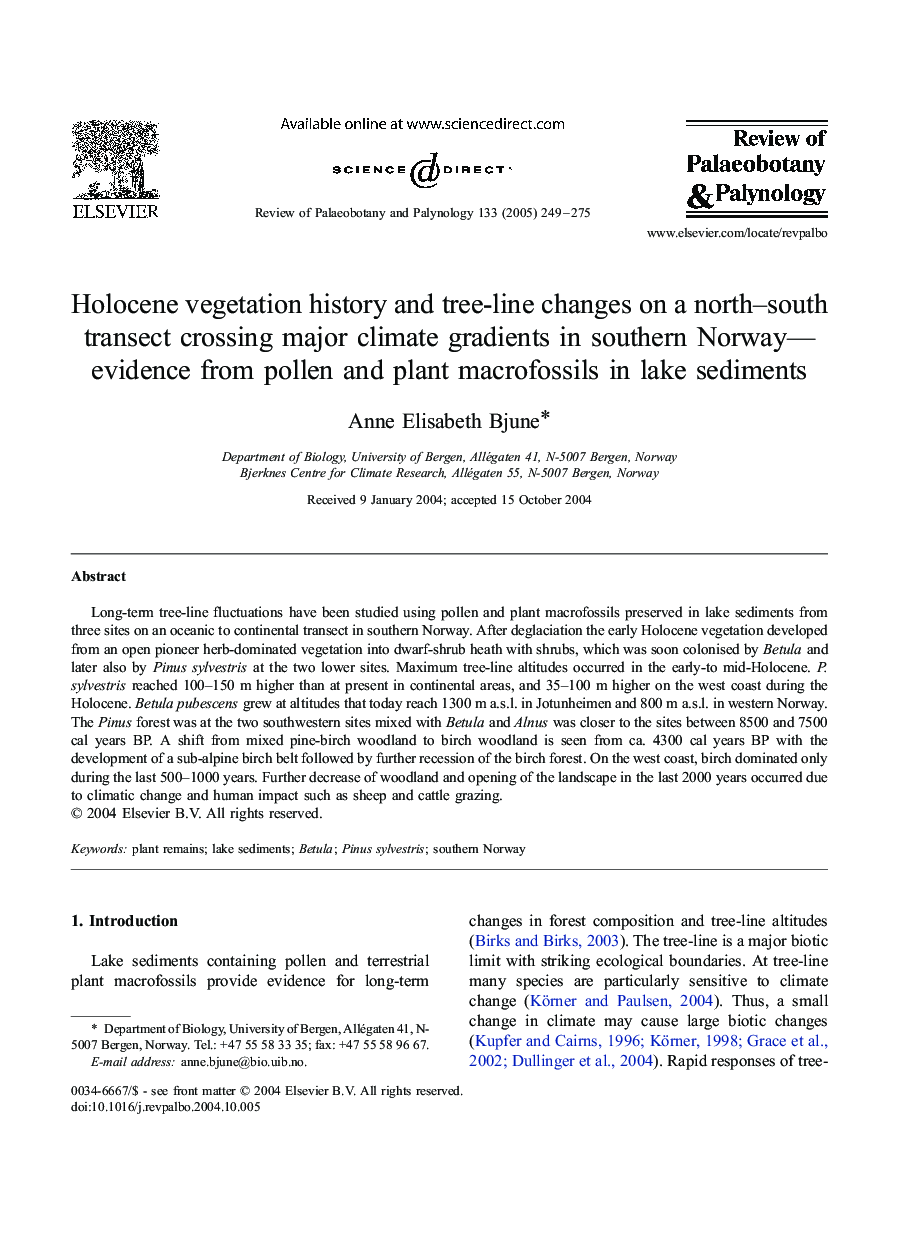| Article ID | Journal | Published Year | Pages | File Type |
|---|---|---|---|---|
| 10122115 | Review of Palaeobotany and Palynology | 2005 | 27 Pages |
Abstract
Long-term tree-line fluctuations have been studied using pollen and plant macrofossils preserved in lake sediments from three sites on an oceanic to continental transect in southern Norway. After deglaciation the early Holocene vegetation developed from an open pioneer herb-dominated vegetation into dwarf-shrub heath with shrubs, which was soon colonised by Betula and later also by Pinus sylvestris at the two lower sites. Maximum tree-line altitudes occurred in the early-to mid-Holocene. P. sylvestris reached 100-150 m higher than at present in continental areas, and 35-100 m higher on the west coast during the Holocene. Betula pubescens grew at altitudes that today reach 1300 m a.s.l. in Jotunheimen and 800 m a.s.l. in western Norway. The Pinus forest was at the two southwestern sites mixed with Betula and Alnus was closer to the sites between 8500 and 7500 cal years BP. A shift from mixed pine-birch woodland to birch woodland is seen from ca. 4300 cal years BP with the development of a sub-alpine birch belt followed by further recession of the birch forest. On the west coast, birch dominated only during the last 500-1000 years. Further decrease of woodland and opening of the landscape in the last 2000 years occurred due to climatic change and human impact such as sheep and cattle grazing.
Related Topics
Physical Sciences and Engineering
Earth and Planetary Sciences
Palaeontology
Authors
Anne Elisabeth Bjune,
